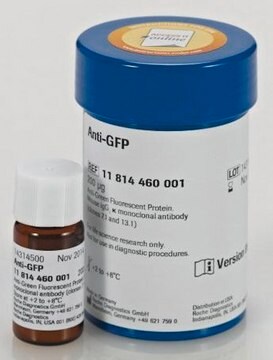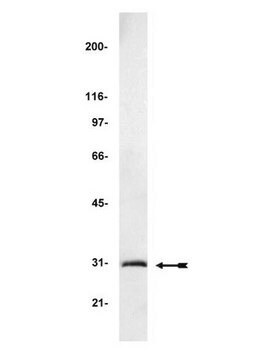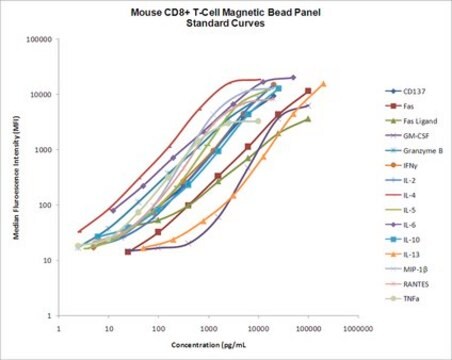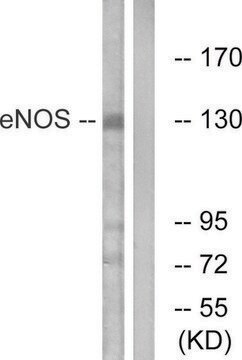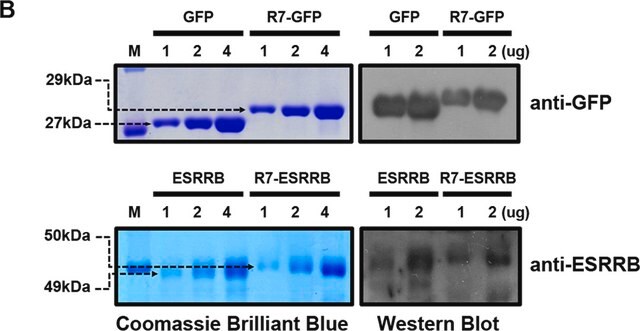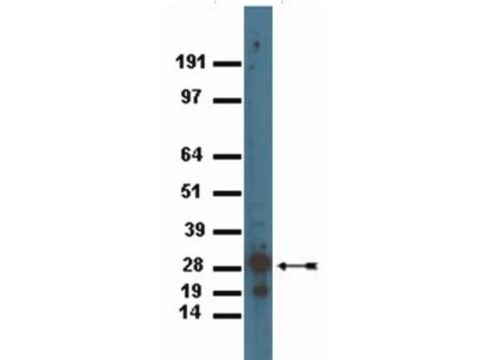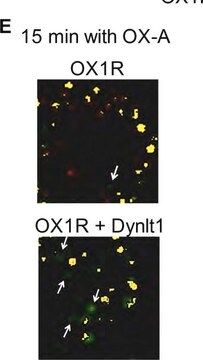AB16901
Anti-Green Fluorescent Protein Antibody
Chemicon®, from chicken
Synonym(s):
GFP, eGFP
About This Item
Recommended Products
biological source
chicken
Quality Level
antibody form
purified immunoglobulin
antibody product type
primary antibodies
clone
polyclonal
species reactivity
vertebrates
manufacturer/tradename
Chemicon®
technique(s)
immunocytochemistry: suitable
immunoprecipitation (IP): suitable
western blot: suitable
UniProt accession no.
shipped in
wet ice
target post-translational modification
unmodified
General description
Specificity
Immunogen
Application
Immunocytochemistry: GFP can be detected in cells that are transfected with a plasmid directing the expression of either GFP or a GFP-Fusion protein. Cells that do not express GFP exhibit no detectable staining. AB binding was determined using HRP conjugated-anti chicken secondary Abs and visualized using DAB. The anti-GFP Abs were used at 1-2,500-5,000 fold dilution. Cells were fixed using 4% formaldehyde in PBS (pH7.4). For immunocytochemistry, the cultures were fixed in 4% formaldehyde in PBS pH7.4, for 20 minutes at room temperature. The cells are permeabilized with 0.2% Triton X-100 and 2% serum (corresponding to the aminal in which the secondary antibody was raised) in PBS for 20 minutes at room temperature. Cell cultures are then incubated with primary antisera in PBS containing 2% serum (as above), at 4°C, overnight. Antibody binding is detected using an avidin/biotin/peroxidase detection system. Cultures were washed four times (10 minutes each) between steps, and reaction product is developed with a 0.05% diaminobenzidine / 0.02% hydrogen peroxide solution on ice for 8-10 minutes. AB16901 has been used to detect GFP in primary neurons and zebrafish fibroblasts.
Immunoprecipitation: 5μg antibody per no more than 500μl of cell lysate. It is important to use a rabbit anti-chicken secondary for capture or anti-chicken beads as Chicken IgG will not react with protein A or protein G.
Optimal working dilutions must be determined by the end user.
Epitope Tags & General Use
Epitope Tags
Target description
Physical form
Storage and Stability
During shipment, small volumes of product will occasionally become entrapped in the seal of the product vial. For products with volumes of 200μL or less, we recommend gently tapping the vial on a hard surface or briefly centrifuging the vial in a tabletop centrifuge to dislodge any liquid in the container′s cap.
Analysis Note
GFP fusion protein expressed in cells
Other Notes
Legal Information
Disclaimer
Not finding the right product?
Try our Product Selector Tool.
recommended
Storage Class
12 - Non Combustible Liquids
wgk_germany
nwg
flash_point_f
Not applicable
flash_point_c
Not applicable
Certificates of Analysis (COA)
Search for Certificates of Analysis (COA) by entering the products Lot/Batch Number. Lot and Batch Numbers can be found on a product’s label following the words ‘Lot’ or ‘Batch’.
Already Own This Product?
Find documentation for the products that you have recently purchased in the Document Library.
Customers Also Viewed
Our team of scientists has experience in all areas of research including Life Science, Material Science, Chemical Synthesis, Chromatography, Analytical and many others.
Contact Technical Service